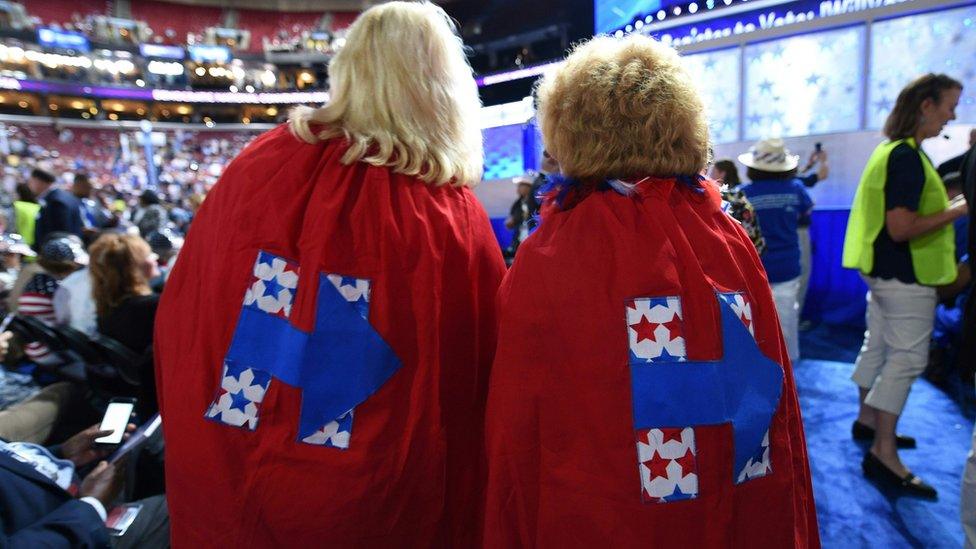Hillary Clinton's flaws
- Published
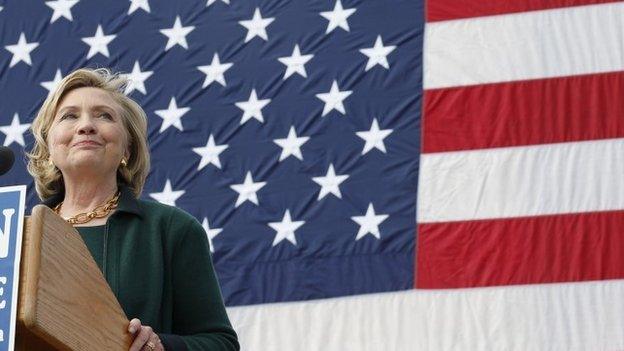
It must be tempting for Hillary Clinton to do little but count down the clock to the election in November. She is so far ahead in the polls and in key battleground states like Virginia and Colorado, her lead is in double digits.
This week she has attended a string of fundraisers, filling her war chest to bombard key states with commercials as the election nears. She has already reserved slots worth $80m (£60.7m).
And yet two-thirds of the American people say they do not find her honest or trustworthy. And that is her flaw.
This week she has been on the defensive. The nagging question is whether, when she was Secretary of State, she traded access to herself and others in government in exchange for payments to the charity the Clinton Foundation.
Her campaign denies the claim and says there is no proof. An investigation by Associated Press, fiercely contested by the Clinton campaign, found that a significant number of people she met outside government ended up paying into the Clinton Foundation.
For the time being this is less about facts and more about the perception that access to Mrs Clinton was related in some way to donations. The question is why she didn't take steps to place herself above suspicion.
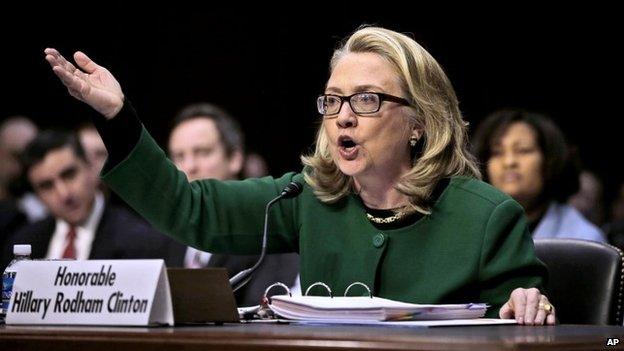
Mrs Clinton has often found herself on the defensive
It enables Donald Trump to call the Clinton Foundation a "crooked enterprise" and to argue that "it's impossible to figure out where the State Department begins and the Clinton Foundation ends".
And then there was the use of a private server and her emails. After months of stories she has still been unable to put the issue of these emails to rest. The FBI has turned over to the State Department another 15,000 emails that were discovered on her private server. Some of them undoubtedly will be published before the election.
Again no "smoking gun" has been found although the FBI judged her handling of classified information as "extremely careless". But why didn't she opt for complete disclosure and transparency much earlier?
And then there is a liking for secrecy. She hasn't given a full news conference in more than nine months. She has held more than 300 fund-raising events, but only five have been open to reporters.
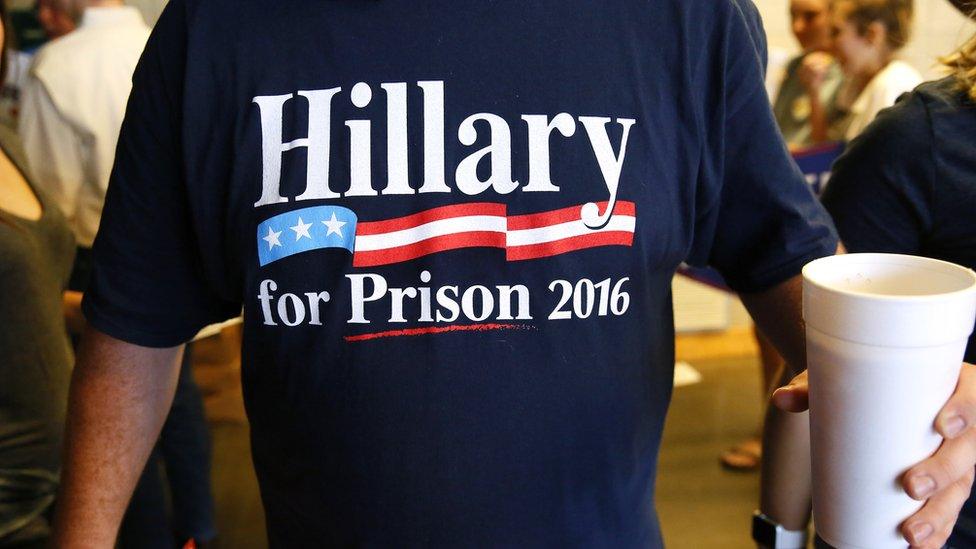
This is now a bare-knuckle fight election
She is not a natural campaigner and can sometimes lack warmth and spontaneity. Recently the singer Cher, at a fund-raising event, described her as "shy and not the greatest speaker in the world".
It is as if, after years of accusations and investigations, she has drawn up her defences. When her husband was in the White House she spoke of a "vast right-wing conspiracy" aimed against them.
And she has reason to be defensive. During this campaign there are swirling conspiracies, stoked on the Internet, that, for instance, she's hiding health problems. On one late night show she was asked "can you open this jar of pickles?" to somehow demonstrate her robust health.
She is on course to become the next President but she lacks popularity. The first woman President would be another moment of history but, so far, there is little excitement at the prospect. Perhaps after Margaret Thatcher and Angela Merkel, a woman leader attracts less attention.
She has detailed proposals on creating jobs and spending on infrastructure and her main theme - rebuilding America's middle class - is a strong pitch.
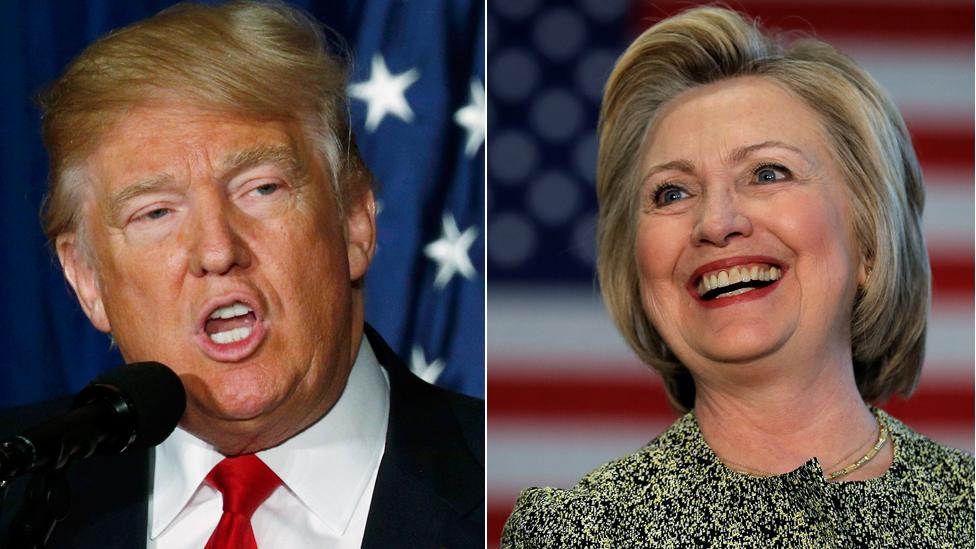
Donald Trump believes the character question over Hillary Clinton is his strongest card
The fact is that Mr Trump makes Clinton's success likely and Clinton's flaws give Trump reason to believe.
He currently sees her character as his strongest card while the Democrats depict Trump as unqualified and unfit to lead and govern.
So Clinton will assert that the Trump campaign is a brand of political conservatism associated with white nationalism and nativism. She accuses Trump of '"taking a hate movement mainstream".
As Labor Day approaches the election has all the appearance of a bare-knuckle fight focused on character between two flawed candidates. Many American people will be drawn to Trump's promise to tear down the establishment but many others will incline to Clinton and her claim to represent the mainstream in American life.
- Published23 August 2016
- Published6 November 2016
- Published7 June 2016
- Published28 July 2016
